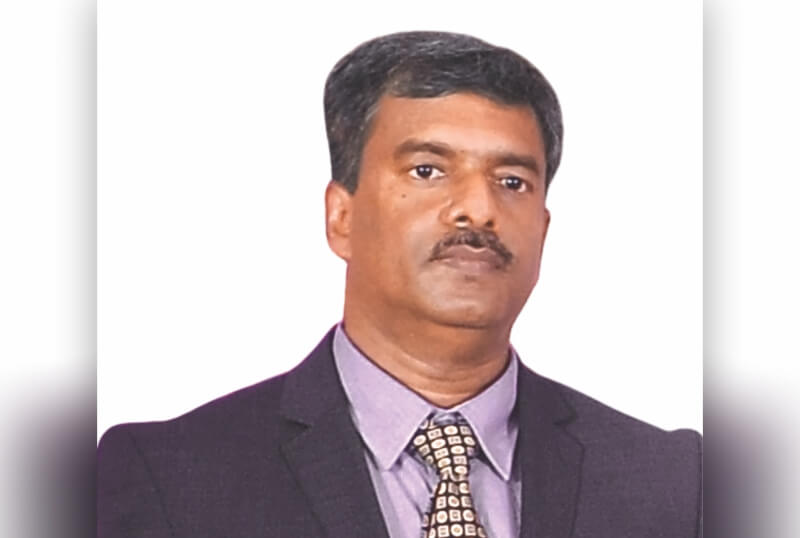“Industry 4.0 is an enabling layer to what papermakers have already been doing where cost-effective cloud technology will enable early movers to warehouse immense data.”

Haber provides automated, AI-driven solutions to generate accurate, real-time insights and help industries manage their process more efficiently. The company addresses paper manufacturers’ concerns around papermaking processes through its real-time monitoring and AI. With eLIXA, the paper manufacturers are also able to control microbial growth in their paper machines, monitor and control brightness in the pulping process and reduce the cost of raw material while improving quality without any manual interventions. In an interview with Paper Mart, Mr. Felix Sahayaraj, Vice President – Sales, Haber talks about the company’s solutions that cater to the pulp and packaging industry and the impact Industry 4.0 can bring to the paper industry.
Paper Mart: Tell us about your company and its product portfolio.
Felix Sahayaraj: Haber is an industrial IoT and AI company focused on specialty chemical and process applications in pulp, paper, and packaging and other industries like mining, mineral processing, metals, and food and beverage processing. Launched in 2017, our proprietary platform eLIXA can be applied not only to chemical control but also to mechanical and process control. The platform integrates data from disparate sources, homogenizes the data and learns patterns and trends, and uses this to intervene in real-time, thus delivering significant savings to paper mills in the form of reduced downtime, higher throughput and lower chemical, energy, and water consumption.
PM: What products and services provided by you, are tailored specifically to the needs of the paper industry?
FS: Our proprietary platform eLIXA can be applied to many applications from pulp mill scale control, foam control, brightness control, etc. to paper machine applications like sizing, microbiological control, retention and drainage aids, and refiner control.
PM: What are the AI-driven solutions provided by you to promote asset integrity and improve plant efficiency?
FS: One of the unique use cases include scale control in liquid ring vacuum pumps – predicting and controlling scale in vacuum pump systems in the wire and press sections of paper machines to assist with drainage of water. Scaling in vacuum pumps can result in insufficient vacuum and thus hamper drainage. Papermakers have to compensate by decreasing the speed of the machine (lowering production) or increasing the energy consumption of the vacuum pumps to attain the desired drainage. Alternately, to achieve target solids – the drying load will transfer to the dryer section – which is the most expensive water removal section. Also, scaling requires frequent cleaning which is done using abrasive mechanical or chemical methods which reduces asset life. Our AI-based eLIXA platform learns and predicts scaling potential in vacuum pumps helping papermakers maintain drainage in wire and press sections and reducing or eliminating the need for cleaning thus increasing the life of the asset.
“Our proprietary platform eLIXA can be applied to many applications from pulp mill scale control, foam control, brightness control, etc. to paper machine applications like sizing, microbiological control, retention and drainage aids, and refiner control.”
Another use case of eLIXA for extending asset life is dryer cylinder condition monitoring and bearing failure prediction by analysing vibration, temperature, and load data in real-time. The mill can manage its bearing inventory in a lean manner and extend the life of bearings and not face any catastrophic bearing failure and resulting unplanned downtime. eLIXA will also alert when lube oil has to be replaced resulting in significant savings in lube oil consumption. Analysing the data can also alert several root causes including condensate build-up in the dryer cylinder, alignment issues, dryer screed stretching, or clogging to name a few.
PM: How important is retention and drainage for paper machine operations? What are the solutions provided by Haber in this context?
FS: Low retention contributes to inefficient use of expensive furnish components. When filler and other additives are not sufficiently retained, the expected sheet properties are not met and these un-retained components can create machine deposits problems. A good retention program can also ensure better formation – more uniform distribution of fillers in the sheet and reduced sheet two-sidedness, improved opacity, reduced machine deposits, reduced wet-end breaks, holes and spots in the sheet due to high levels of fillers, fines, and colloidal materials circulating in the wet-end of the paper machine.
eLIXA models the complex relationship between multiple variables like pH, alkalinity, dissolved ions, suspended material, conductivity, colloidal charge, dissolved and entrained gases, hardness, furnish source, and quality, filler quantity and quality that impact retention and in real-time optimizes dosage levels of chemical retention and drainage aids. This helps in maintaining FPR (first pass retention) and FPAR (first pass ash retention) at consistent levels even during run-time GSM changes or other variations in furnish, filler, and water quality.
PM: What changes can industry 4.0 bring to the paper industry?
FS: Data has always been hugely valuable to papermakers to find operational efficiencies and for product and process innovation. Industry 4.0 is an enabling layer to what papermakers have already been doing where cost-effective cloud technology will enable early movers to warehouse immense data. Running machine learning algorithms on these continuously streaming data sets accelerates the discovery of efficiencies and product innovation. In short, cloud technologies and AI will be key competitive differentiators in the industry just like what we have already witnessed in retail and banking.




